Sherpa People- In the heart of the towering Himalayas where the air is thin and the mountains loom, resides a remarkable community renowned for their unparalleled work ethic and unyielding determination and they are none other than Sherpa people. For centuries, they have forged a reputation as some of the world’s hardest-working individuals, demonstrating an extraordinary level of endurance and resilience in the face of daunting challenges.
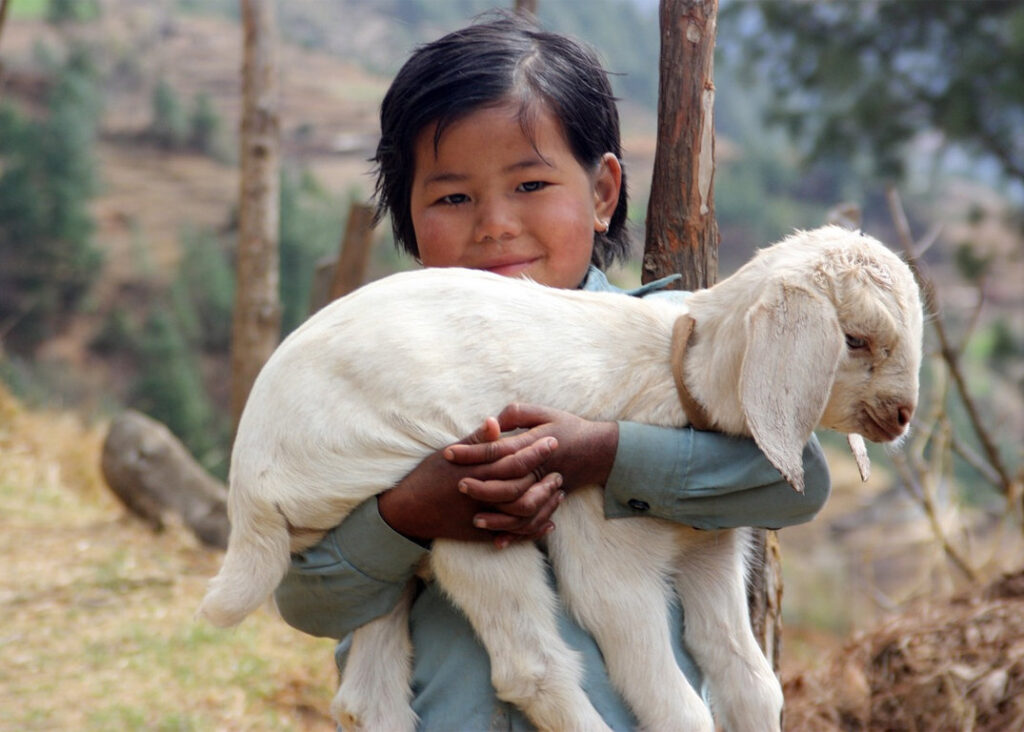
These remarkable men and women have not only conquered the world’s highest peaks but have also won the hearts of countless adventurers with their unwavering work ethic and friendly nature.
Join us as we jump into the fascinating world of the Sherpa people and explore the extraordinary qualities that make them the epitome of hard work and dedication.
History of Sherpa People
Origins and Migration
The Sherpa people are believed to have originated from the eastern Tibetan region of Kham. Due to political and social unrest in the region, they migrated to the Solu–Khumbu region of Nepal in the 15th century. They settled in the high-altitude regions living in harmony with the rugged terrain and the majestic peaks that surrounded them.
Sherpas and Mountaineering
The Sherpa people’s connection to mountaineering began during the early 20th century when European explorers and climbers started venturing into the Himalayas.
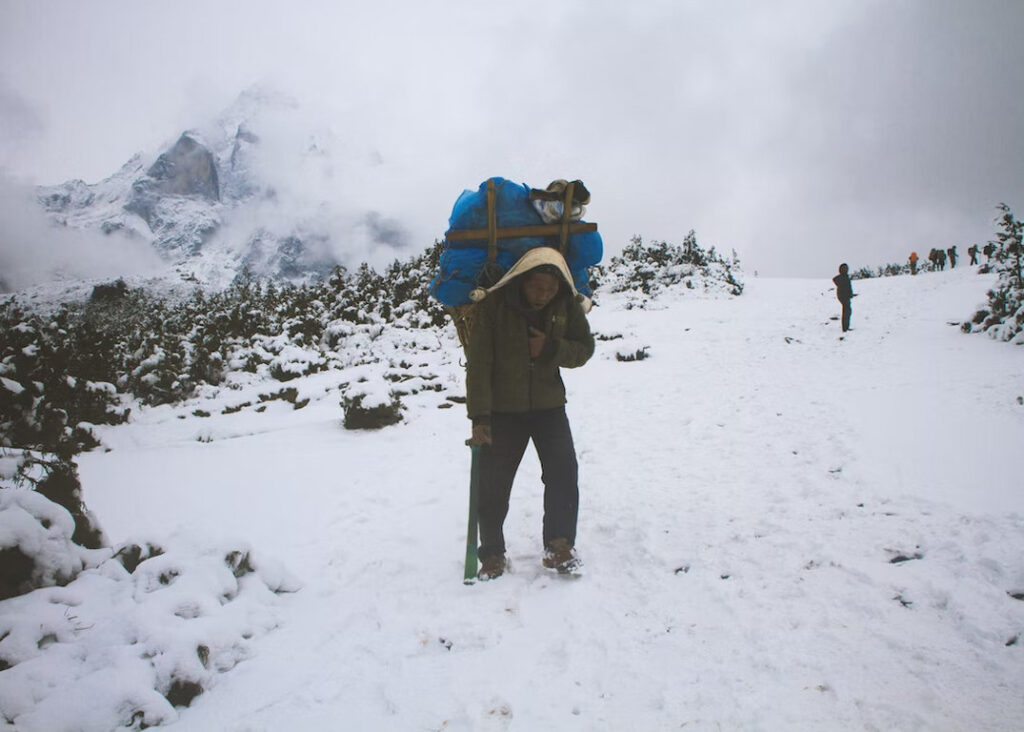
The Sherpas, with their intimate knowledge of the mountains, quickly became indispensable members of these expeditions. They played crucial roles as porters, guides, and support personnel, enabling the success of numerous historic climbs.
Tenzing Norgay Sherpa and Sir Edmund Hillary
The most iconic moment in Sherpa mountaineering history came in 1953 when Tenzing Norgay Sherpa and Sir Edmund Hillary became the first individuals to reach the summit of Mount Everest, the highest peak in the world.
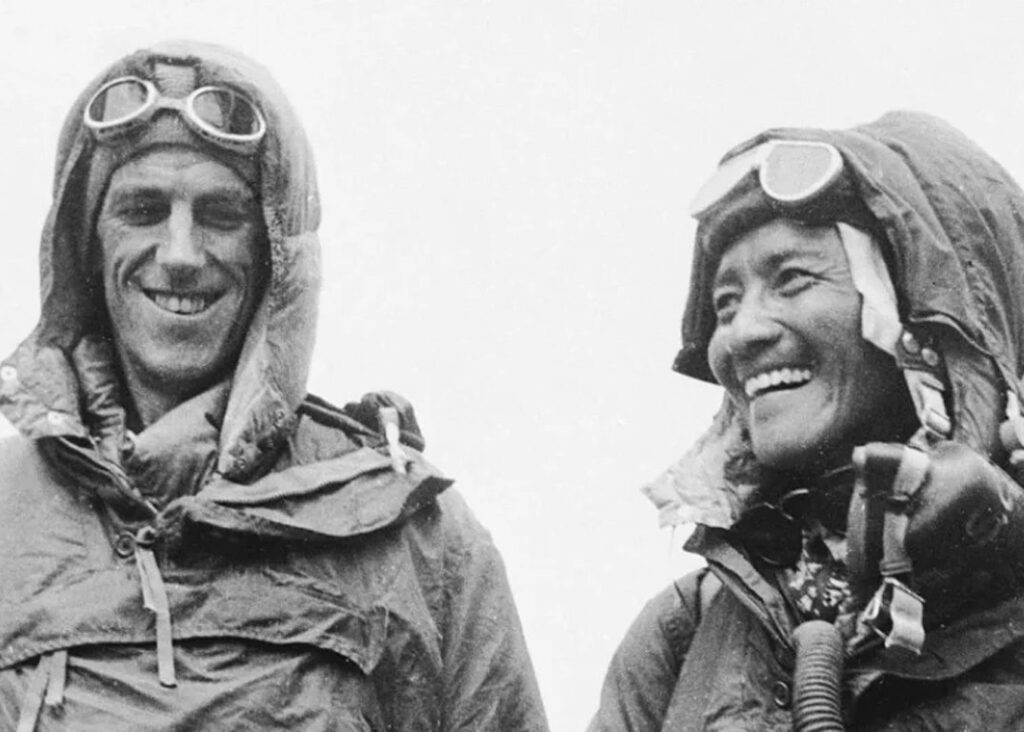
Their triumph symbolized the spirit of collaboration, as the Sherpa people and the Western climbers worked together to achieve an extraordinary feat. Tenzing Norgay’s achievement also shattered the perception that the mountains were insurmountable, inspiring generations of climbers and adventurers to follow in their footsteps.
Sherpa Religion
Let’s take a look into the fascinating realm of the Sherpa religion, unearthing the rich tapestry of their spiritual practices and exploring the profound influence it has on their daily lives.
Also Read: Buddhists Holiest Festival: Mani Rimdu Festival
Sherpa Buddhism: The Essence of Sherpa Spirituality
At the core of the Sherpa religion lies a unique blend of Tibetan Buddhism, Bon, and indigenous animistic beliefs. Tibetan Buddhism serves as the dominant spiritual framework, deeply intertwined with Sherpa culture and traditions.

The Sherpa people practice a form of Vajrayana Buddhism, which emphasizes the use of tantra, meditation, and ritual practices to attain spiritual enlightenment.
The Role of Monasteries and Lamas
Monasteries hold a significant place in Sherpa’s religious life. These centers of worship, knowledge, and community serve as repositories of wisdom, where the Sherpa people gather to receive teachings from lamas (spiritual teachers) and engage in religious ceremonies.
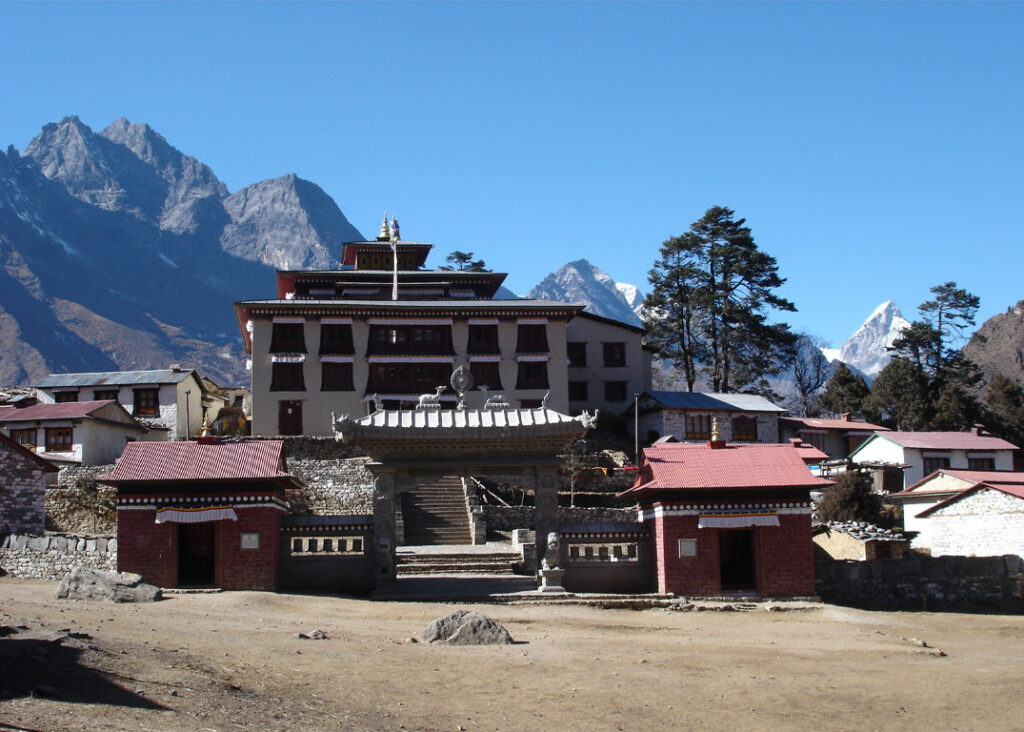
The Tengboche Monastery, perched at an elevation of 3,867 meters in the Everest region, is one of the most revered monastic complexes for Sherpas. It acts as a spiritual beacon and plays a vital role in Sherpa’s religious life.
Sherpa Deities and Spiritual Guardians
The Sherpa people deeply revere a pantheon of deities and spiritual guardians. Among them, they hold a special place for Guru Rinpoche. They consider him a spiritual guide and protector, and they invoke him to ward off obstacles and ensure safe journeys in the treacherous mountains. They also venerate other deities like Chomolungma (Mount Everest) and Khumbila, the patron deity of the Khumbu region, for their power and benevolence.
Also Read: Tengboche Monastery: The oldest monastery in Khumbu
Sherpa Culture
Here are some interesting facts about Sherpa culture:
People recognize Sherpas for their mountaineering skills.
The Sherpa people of Nepal are famous for their exceptional mountaineering skills and have been instrumental in assisting numerous successful expeditions to the world’s highest peak, Mount Everest.

They are highly experienced in navigating treacherous terrains and extreme altitudes.
Deep-rooted Tibetan influence
People believe that the Sherpas migrated from the Tibetan region of China several centuries ago. As a result, their culture and language have strong ties to Tibetan Buddhism, and they follow many Tibetan customs and traditions.
Guardians of the Himalayas
Sherpas have a deep spiritual connection with the Himalayan mountain range. They view the mountains as sacred and believe in the existence of protective deities that reside in the peaks.
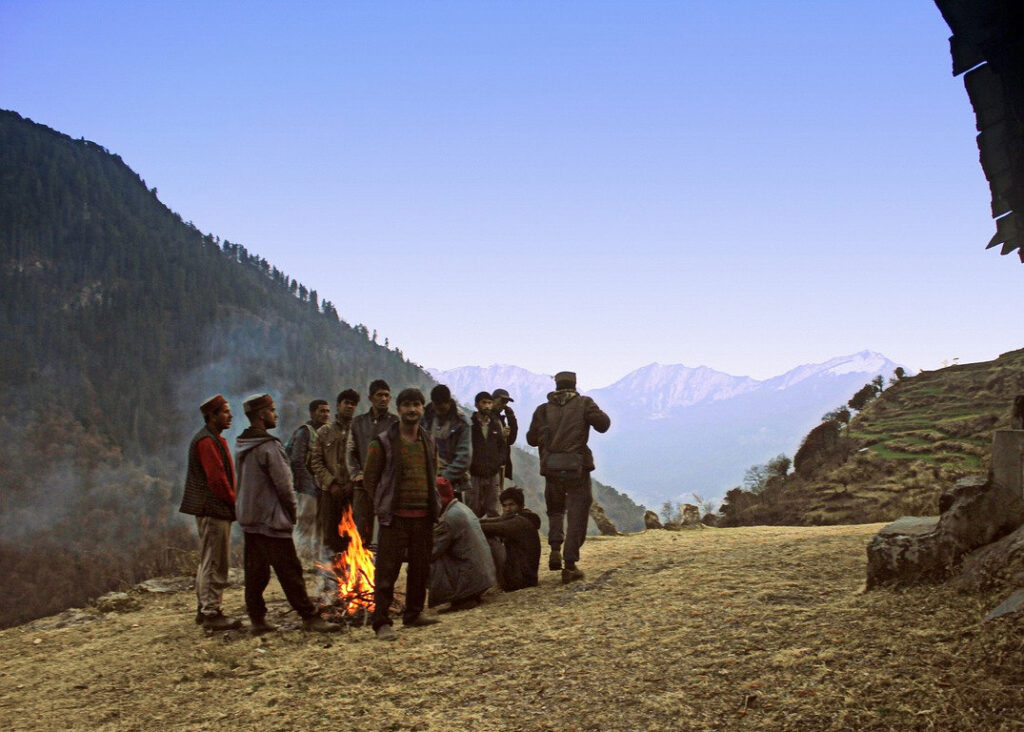
Sherpas often perform religious ceremonies and rituals to seek blessings and protection before embarking on mountain expeditions.
Sherpa hospitality
Sherpas are known for their warm and welcoming nature. They have a tradition of providing hospitality and support to mountaineers, trekkers, and visitors to their region. Sherpa tea houses along popular trekking routes offer a cozy and comfortable resting place for travelers, allowing them to experience Sherpa hospitality firsthand.
Popular: Everest Base Camp FAQ
Skilled artisans
Sherpas are skilled craftsmen and produce various handicrafts that reflect their cultural heritage. They create intricate and colorful tapestries known as “thangkas,” which are religious paintings often depicting Buddhist deities.
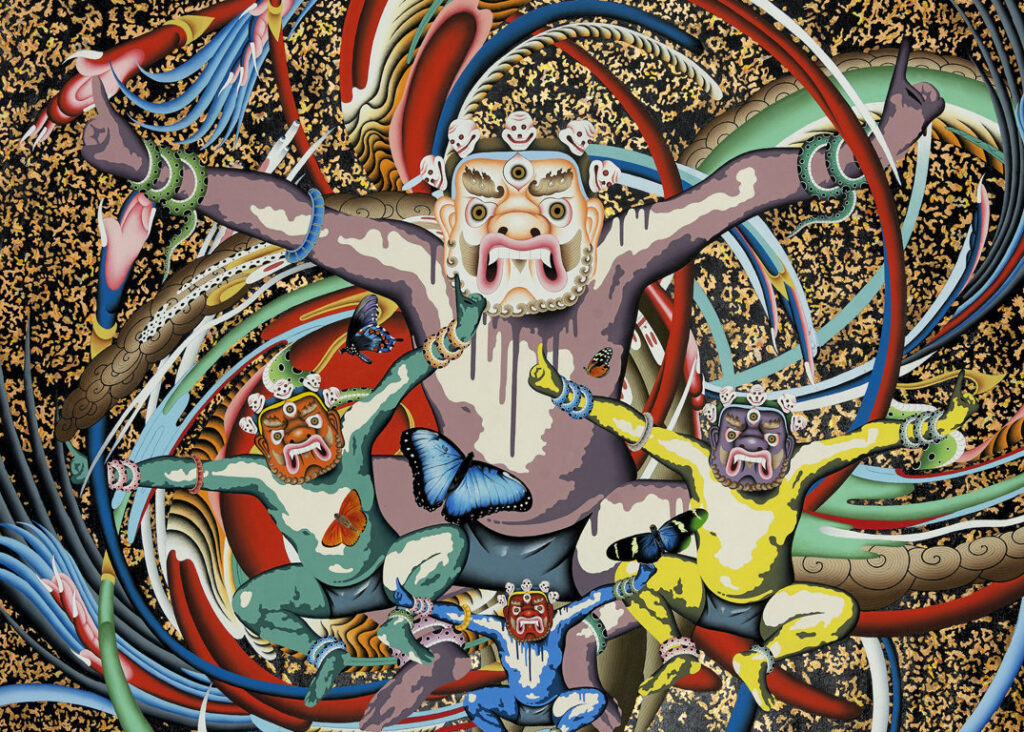
Additionally, Sherpas are known for their craftsmanship in creating traditional clothing and jewelry.
Sherpa cuisine
The Sherpa cuisine incorporates hearty and nourishing dishes suited to the high-altitude environment. Tsampa is a staple food in the Sherpa community. It is made from roasted barley flour and is often mixed with yak butter tea or water to form a dough-like consistency. It is a highly nutritious food that provides energy and warmth in the harsh mountain climates. Sherpa cuisine also features a variety of bread and pastry preparations.

Sherpa bread also known as “Khapse,” is a type of deep-fried bread made from wheat flour and often shaped into intricate designs. It is commonly enjoyed during festivals and special occasions. Yak butter tea also known as “po cha,” is a popular and essential beverage in Sherpa culture. It is made by churning yak butter with tea leaves, salt, and water, resulting in a rich and nourishing drink that helps combat the cold and altitude.
Festivals and celebrations
Sherpas celebrate several festivals throughout the year, with the most significant one being “Losar” (Tibetan New Year). During Losar, families come together, perform religious rituals, and exchange greetings.
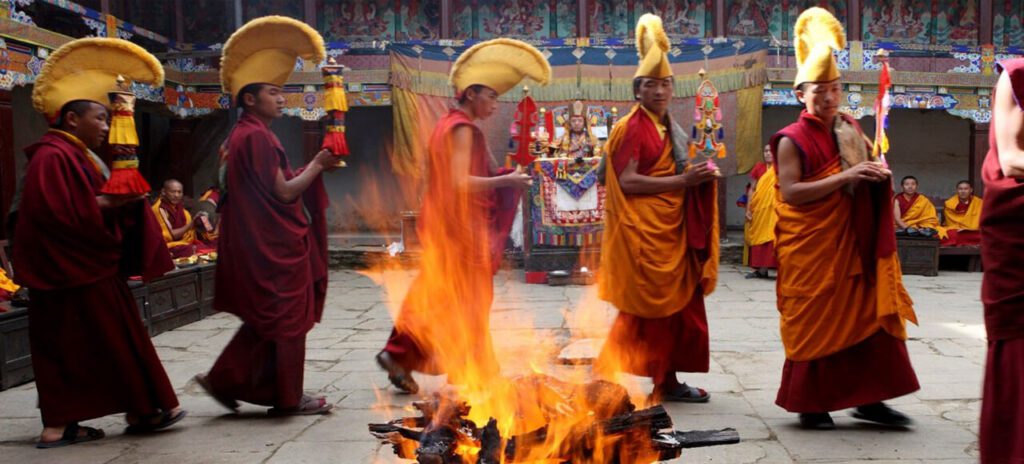
“Mani Rimdu” is another important Sherpa festival celebrated at the Tengboche Monastery, featuring masked dances and performances.
Modern contributions
Sherpas have made significant contributions beyond mountaineering. Many Sherpas have become successful entrepreneurs, guides, and professionals in various fields. They play a vital role in the tourism industry, sharing their expertise and knowledge with visitors, and contributing to the economic development of the region.
Also Check: 19 You Need To Know Before Visiting Nepal
Sherpa Guide
Sherpa guides, the unsung heroes of the mountainous realm, embody the essence of resilience and expertise. With their weathered faces reflecting a deep connection to the rugged terrain, these extraordinary individuals possess an innate ability to navigate the treacherous paths that lay hidden amidst the towering peaks.
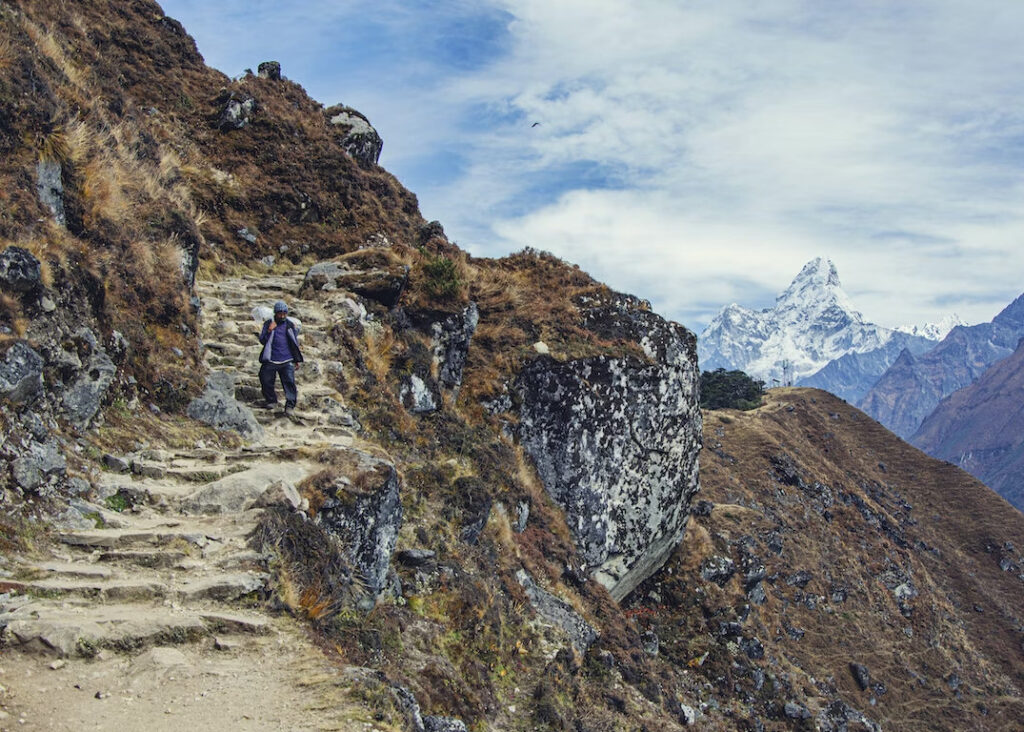
Their souls, like the mountains they conquer, are as steadfast as the granite beneath their feet. Endowed with an uncanny knowledge of the land, Sherpa guides become beacons of hope for adventurers seeking to conquer the seemingly insurmountable. Their indomitable spirit and unwavering determination make them not mere escorts but guardians of dreams, as they patiently lead explorers through icy avalanches, precarious cliffs, and perilous crevasses.
In their footsteps, courage takes root, and trust flourishes, thereby creating an unbreakable bond between guide and traveler. Moreover, with each ascent, Sherpa guides etch their tales into the tapestry of mountaineering history. They embody the very essence of human triumph against the majestic backdrop of nature’s most formidable creations. Furthermore, their dedication serves as an inspiration to all who yearn for adventure and seek to conquer the world’s highest peaks.
Sherpa Dress/ Clothing
The Sherpa people, renowned for their remarkable resilience in the towering Himalayas, possess a sartorial tapestry as vibrant and awe-inspiring as the majestic landscapes they call home. Adorned in their traditional clothing, they blend heritage with functionality in a captivating symphony of colors and textures.
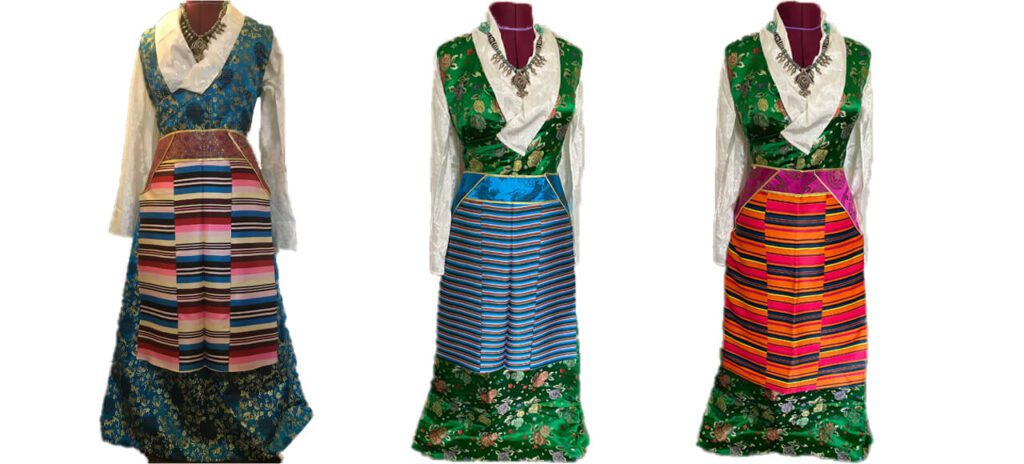
Every garment reflects their profound connection to nature and their nomadic lifestyle. The sherwani, a long, quilted coat, embraces them in warmth, its intricate embroidery mirroring the exquisite craftsmanship of their ancient temples.
More: Clothing for the Everest Base Camp Trek: A Comprehensive Guide
Beneath it, a sturdy woolen chuba drapes gracefully, safeguarding them from biting winds, while its bright hues mirror the kaleidoscope of prayer flags dancing on mountaintops. In harmony with the rugged terrain, their trousers, adorned with sturdy leather patches, are a testament to their spirit of adventure and determination.
As the Sherpa people traverse treacherous paths, their clothing stands as a testament to their indomitable spirit and serves as a living tapestry that tells the story of a resilient community forever bound to the majestic Himalayas.
Sherpa Jewellery
Sherpa jewelry, steeped in rich cultural heritage weaves together the beauty of the Himalayan region with exquisite craftsmanship. Each piece tells a captivating story, reflecting the resilience and spirituality of the Sherpa people.
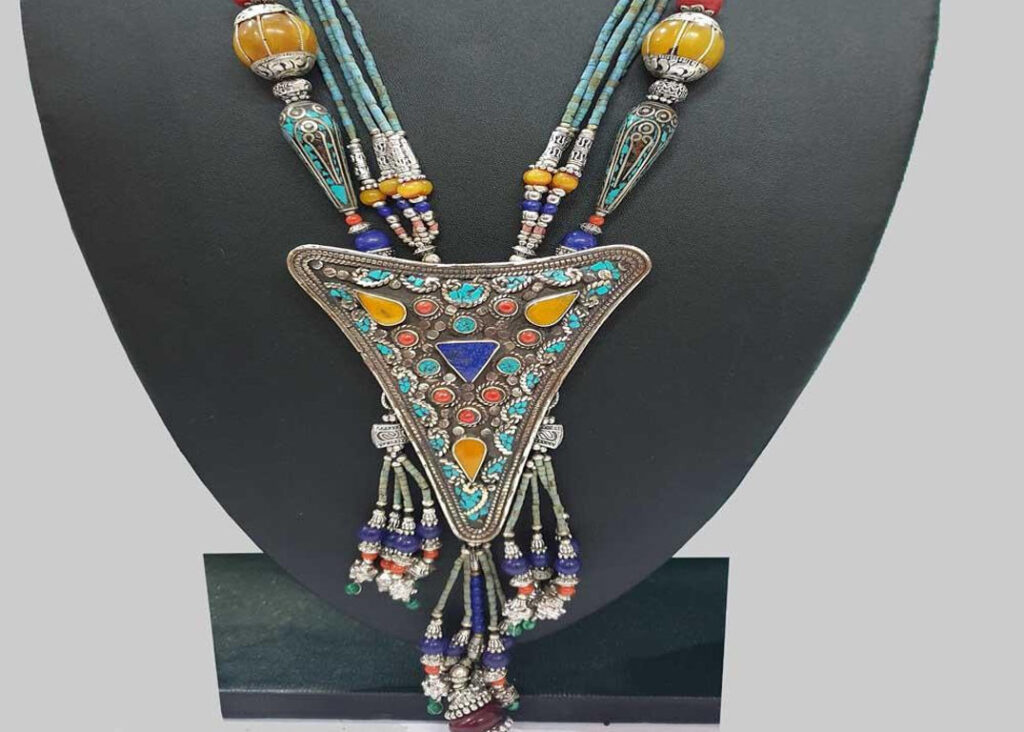
Artisans meticulously handcraft these intricate adornments with precious metals like silver and gold, adorning them with vibrant gemstones that symbolize the majestic landscapes and mystic energy that surround the Sherpa community. Moreover, from the ornate necklaces that cascade like mountain streams to the delicately carved bracelets reminiscent of ancient symbols, Sherpa jewelry transports you to a realm where tradition meets timeless elegance, allowing you to immerse yourself in a world of culture and craftsmanship.
With every shimmering piece, you can feel the whispers of the mountains, the echoes of ancient tales, and the enduring legacy of the Sherpa culture, creating a captivating fusion of art and tradition that resonates with both the wearer and the beholder.
Sherpa Dance
Syabru, an enchanting form of Sherpa dance as well as Yolmo dance, transports you to a realm where tradition meets innovation. Amidst the stunning backdrop of the Himalayan peaks, Sherpa dancers in intricate costumes embark on a mesmerizing journey. The rhythm of the drums and cymbals echoes through the valleys, as nimble footwork and graceful movements paint a captivating picture.

The dancers weave through the space, their bodies swaying with elegance and precision, as if in a celestial trance. Syabru dance is a tapestry of heritage, where ancient tales are retold and the Sherpa way of life is honored. It embraces innovation too, as modern elements blend seamlessly with age-old traditions, creating a spectacle that both transcends time and captivates the soul.
Also Read: Syabrubesi: Junction of Major Trekking Route
Witnessing the spellbinding Syabru dance is not merely an observation; it is an invitation to immerse oneself in the rich cultural mosaic of the Sherpa people and embark on a transformative journey of discovery.
Sherpa Festival
The Sherpa people celebrate a tapestry of vibrant festivals that reflect their rich cultural heritage, deep-rooted spirituality, and sense of community. Additionally, let’s explore some of the remarkable festivals celebrated by the Sherpa people, which offer a glimpse into their traditions and the values they hold dear.
Losar: The Sherpa New Year Celebration
One of the most significant festivals celebrated by the Sherpa community is Losar, the Sherpa New Year. Furthermore, it marks the beginning of the Tibetan lunar calendar and is observed with great enthusiasm. During this celebration, Losar is a time for purification, renewal, and reflection.
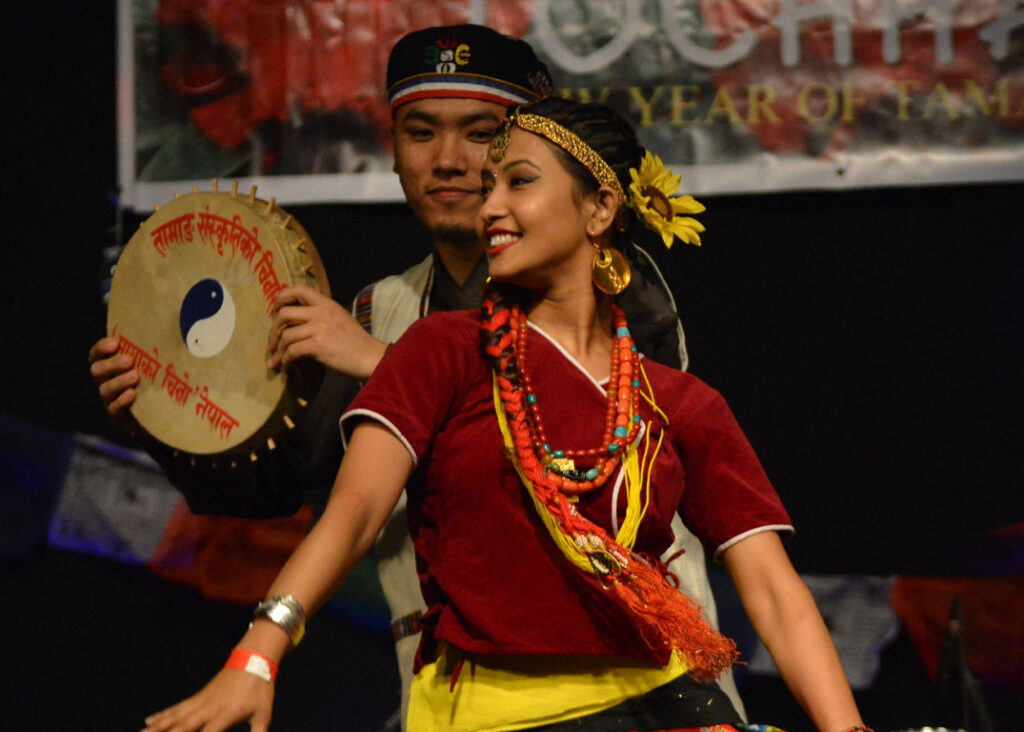
Sherpas engage in various rituals including visiting monasteries, lighting butter lamps, and offering prayers. Cultural performances, traditional dances, and feasts are also integral parts of the festivities, fostering a strong sense of community and togetherness.
Mani Rimdu: The Spectacle of Tengboche Monastery
Mani Rimdu is a grand Buddhist festival celebrated primarily at Tengboche Monastery in the Everest region of Nepal. This colorful and elaborate event lasts for several days and is open to both Sherpa locals and visitors.

The festival features masked dances, religious ceremonies, and rituals performed by monks dressed in ornate costumes. It is believed that Mani Rimdu blesses the community and brings good fortune for the year ahead. The vibrant energy and spiritual aura during this festival are truly awe-inspiring.
Dumje: Honoring the Sherpa Protectors
Dumje is an annual Sherpa festival held in the villages of Namche Bazaar and Tengboche. This festival serves as a way for the Sherpa community to honor their deities and seek their blessings for the protection and welfare of their people.
The festivities include sacred mask dances, traditional music, and religious processions. Dumje is a time for reflection, gratitude, and the strengthening of communal bonds, as Sherpas come together to celebrate their shared faith and heritage.
Saga Dawa: Commemorating the Buddha’s Life
The Sherpa and other Buddhist communities celebrate an important festival known as Saga Dawa. Additionally, it falls on the fourth month of the Tibetan lunar calendar and commemorates significant events in the life of Gautama Buddha. These events include his birth, enlightenment, and passing into Nirvana.
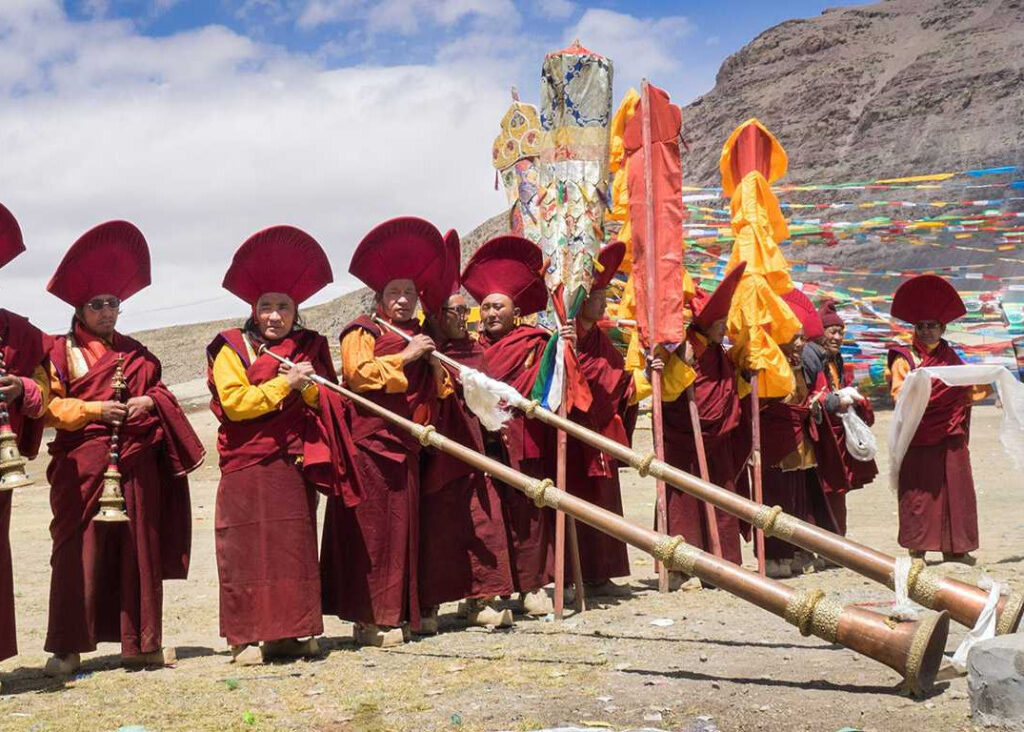
During Saga Dawa, Sherpas engage in acts of merit, such as lighting butter lamps, circumambulating sacred sites, and offering prayers. This festival emphasizes compassion, generosity, and the pursuit of spiritual enlightenment.
Sherpa Food
Sherpa cuisine, renowned for its rich flavors and nourishing qualities, offers a delightful array of dishes that reflect the unique culture and mountainous terrain of the Sherpa people. Furthermore, at the heart of their cuisine lies staple ingredients like yak meat, barley, and potatoes, meticulously prepared with traditional techniques. In addition to these staples, one can savor the tantalizing momo dumplings, stuffed with minced meat or vegetables, delicately steamed or fried to perfection. These delectable dishes not only showcase the culinary artistry of the Sherpa people but also provide a taste of their cultural heritage.
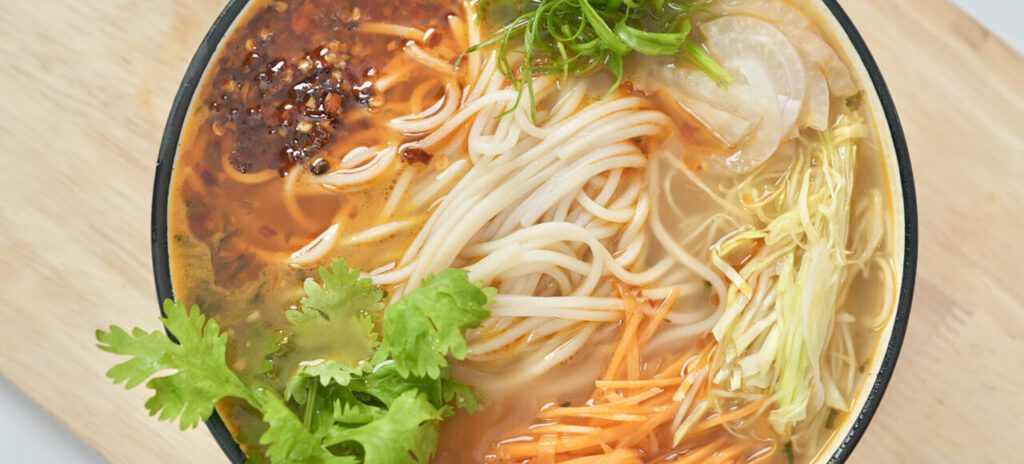
For a hearty meal, the Sherpas offer Thukpa, a soul-warming noodle soup brimming with vegetables and aromatic spices. Tsampa, made from roasted barley flour, is a nutritious and energy-packed staple often enjoyed mixed with butter tea. The Sherpa food experience wouldn’t be complete without indulging in chhurpi, a chewy cheese made from yak milk, which is not only a delicious snack but also serves as a reliable source of sustenance in the rugged Himalayan terrain.
Whether you’re seeking comfort or adventure, Sherpa cuisine promises a delectable journey for your taste buds.
Sherpa Language
Sherpa language, an enchanting linguistic tapestry, seamlessly weaves together the rich cultural heritage of the Sherpa people in the Himalayan region. Moreover, these resilient mountain dwellers, widely renowned for their mountaineering prowess, fluently speak Sherpa, a Tibeto-Burman language with its roots tracing back centuries. In addition to serving as the spoken vehicle of ancient wisdom and local folklore, Sherpa tantalizes the senses with its melodic cadence and unique phonetic nuances. As a result, it offers a captivating glimpse into the Sherpa way of life and their enduring connection to their mountainous homeland.
Popular: Food and Accommodation on Everest Base Camp Trek
Its vocabulary reflects the close relationship the Sherpa community shares with its awe-inspiring surroundings. Furthermore, it encapsulates terms that describe the majestic peaks, serene valleys, and treacherous trails of the Himalayas. Moreover, the Sherpa language stands as a testament to the indomitable spirit of a people whose words echo through time. This preservation of their intrepid heritage offers a glimpse into the captivating world of the mountains, allowing us to understand their unique culture and way of life.
Sherpa on Everest
Sherpas, the legendary mountain climbers of the Himalayas, have become an integral part of the awe-inspiring tapestry that is Everest. With their unwavering determination and unparalleled expertise, these extraordinary individuals have etched their names into the annals of mountaineering history. The Sherpas possess an intimate knowledge of the treacherous terrain, navigating the unforgiving slopes and icy crevasses with almost supernatural grace.
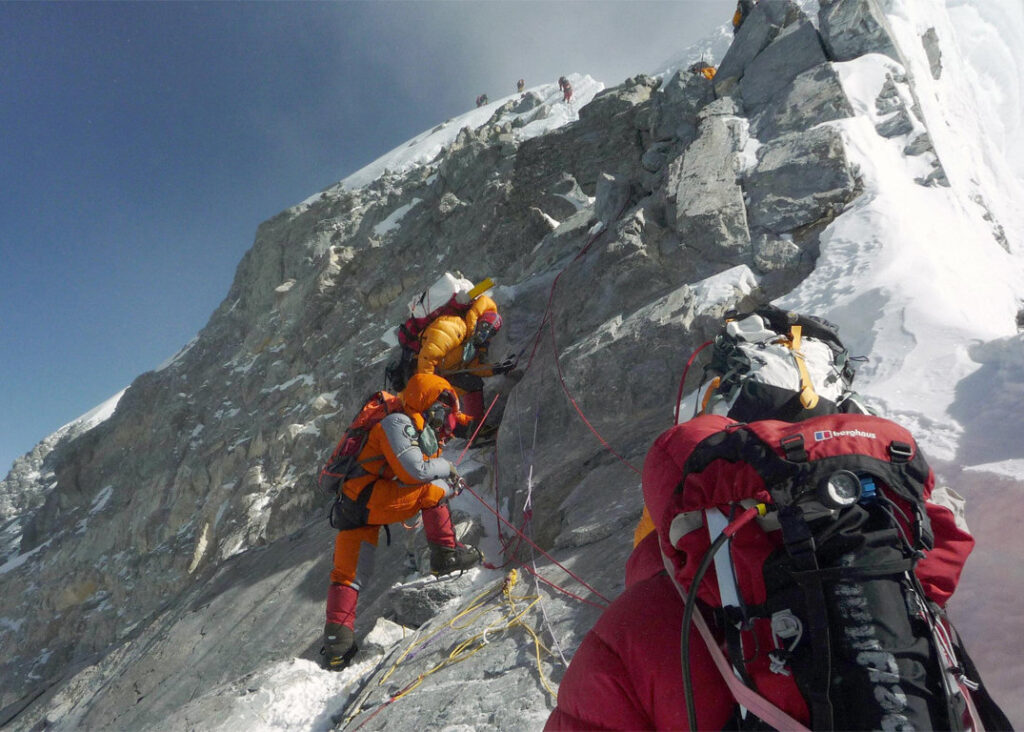
They match their deep spiritual connection to the mountains they call home with their physical prowess and mental fortitude. They are the unsung heroes, shouldering immense burdens and guiding climbers from around the globe toward the roof of the world. Like the mighty yaks that tread cautiously along the Everest Base Camp, the Sherpas are the backbone of every successful ascent, embodying both strength and humility.
With their unwavering support, climbers are not only able to conquer the formidable challenges of Everest but also gain a profound appreciation for the indomitable spirit of the Sherpa people.







